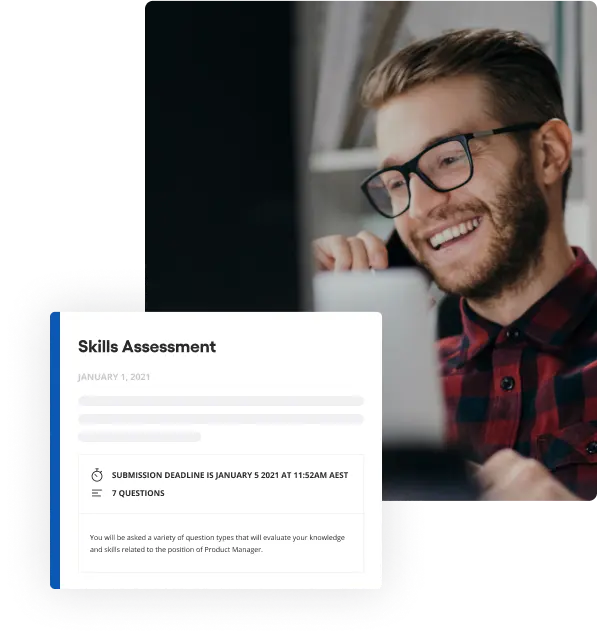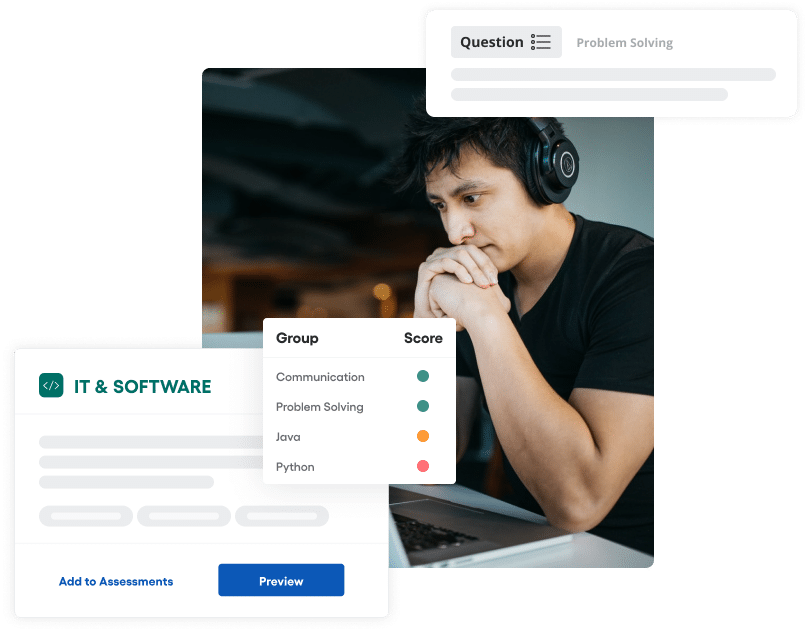How To Hire a Full-Stack Engineer
Complete with job descriptions, skill profiles, and interview templates. Use this Full-Stack Engineer hiring guide to help you make the right decisions, fast.
Full-Stack Engineer Recruitment Guide
What does a Full-Stack Engineer do?
The role of a Full-Stack Engineer is to look after both the front and back end of applications. These applications may consist of anything from mobile applications or websites. Being a Full-Stack engineer means you’re writing server side code like an API or backend code which interacts with a user interface. Full-Stack engineers generally don’t specialize in one language, but rather are proficient in many, as they will need to make many different parts of a system interact with one another.
Day to day tasks of a Full-Stack Engineer
- Creating front end websites
- Developing back end applications to interact with front end components
- Managing databases
- Creating APIs
- Work with stakeholders to meet both technical and consumer needs
- Debugging and testing code

Full-Stack Engineer definition
Full-Stack Engineer’s role which is likened to a jack of all trades, they will work with databases, servers, code and clients in order to produce a product which tries to meet or exceed the needs of a customer.

HIRING PROCESS
Full-Stack Engineer Hiring Process
Build the Ideal Candidate Profile
Write A Job Description Based On Skills
Selecting The Ideal Candidate
Interview Top Performers
Making An Offer
Build the ideal candidate profile
Skills needed for a Full-Stack Engineer
A Full-Stack Engineer must be able to pick up different pieces of technologies without much prior knowledge and understand them in short turn around in order to develop different systems which meet the needs and wants of clients and stakeholders. Full-Stack Engineers will need to have fundamentals of software engineering mastered in order to thrive in this role.
- Spring Core
- Java
- JDBC
- JSP
Pro Tip
Understanding a candidate’s ability in the wide array of technologies that your organisation uses will allow you to find projects where they’ve applied their skills in the past and you will be able to draw connections between your organisation and make the judgement if their skillset is the right fit for your organisation.
WRITE A JOB DESCRIPTION BASED ON SKILLS
How to write a Full-Stack Engineer job description
Once you’ve determined the skills required for the role, you can write the job description to advertise for your position. Here’s what to include in your Full-Stack Engineer job description:
Job Title: What position are you hiring for?
Summary: What makes your company unique? What would it be like to work for you?
Responsibilities: An overview of the role’s day-to-day activities, and how the position contributes to the organization
Requirements: Skills a candidate must have to perform the job successfully
Benefits: Details of compensation, benefits, and any perks on offer
Pro Tip
In building your candidate profile, remember you’ve already identified what skills are needed to succeed in the role. Here’s where to list your “must-have” skills and maybe a couple of “nice-to-have” skills. For example, a Full-Stack Engineer should have experience working with databases, so ask them about their last project where their code interacted with a database.

SELECTING THE IDEAL CANDIDATE
Sample skill tests for a Full-Stack Engineer
Create a free account today to access the full assessment and more from our library
Question 1
Spring Core
Question Type: Multiple Choice
In which of the ways given below can dependencies be injected in a Spring IoC application?
A) Constructor based
B) Destructor based
C) Setter based
Question 2
Java
Question Type: Multiple Choice
Let’s say you want to write software in which you want to compose several objects i.e one object wants to use features offered by another object. Which of the following design patterns is best suited for such a purpose?
Question 3
JSP
Question Type: Multiple Choice
Which of the following methods is used to return the object of ServletContext from the GenericServlet class?
INTERVIEW TOP PERFORMERS
How to interview a Full-Stack Engineer
Once your Vervoe skills assessment has surfaced the most qualified people for your open role, you can focus on interviewing these candidates. The interview should focus on any skills that require development that were highlighted from the skills assessment.
Now you know that candidates can do the job, the interview becomes more of a relationship building exercise where you can get to know the candidate on a more personal level, understand their motivations, and how they would fit in with the team.
Making An Offer
How much does it cost to hire a Full-Stack Engineer?
In the United States the salary of a Full-Stack Engineer is reported to be $97,500 by Talent.com, whereas Glassdoor USA reports it as $90,817. The lowest ten percent of Node.Js Developers are paid $62,000, whereas the top ninety percent earn up to $94,000 with the median of these salaries coming in at $131,000 according to Payscale.com
Full-Stack Engineer Salary United States
In the United States a Full-Stack Engineer can expect to have a salary around $94,000 USD. There will be a few factors which affect this number, which include seniority, location of the organisation and the industry the organisation operates within.
Full-Stack Engineer Salary United Kingdom
As a Full Stack Engineer the salary within the United Kingdom comes out to a value of £46,000 a year. The factors which make this salary come down to a couple of main factors, location of the organisation and skill of the developer.
Full-Stack Engineer Salary Australia
In Australia the median salary for a Full-Stack Engineer is $100,000 AUD. This salary will be heavily dependent on the skill of the employee and the type of work they will be working on.




